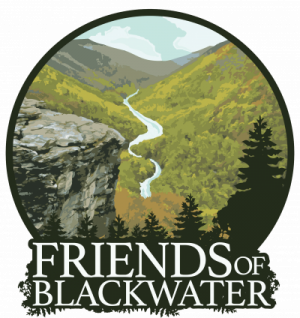
Aves
(Class)
Birds
Passeriformes
(Order)
Songbirds
Winter Wren
Troglodytes hiemalis
This tiny, plump, round, wren can be found working through the fallen woody debris and rhododendron thickets of the moss-covered forest floors while it holds its short, stubby tail erect. You are likely to hear this species before you see it as it makes up for its lack of size with its boisterous song that bursts out from the dark spruce and hemlock covered rhododendron thickets along the waterways of the canyon. Its song is reminiscent of a bubbling, cascading brook. This species can be heard singing early into the spring as it establishes territory and while they are building its nest throughout the breeding season.
Blackburnian Warbler
Setophaga fusca
The flame-orange face of the male is a standout feature of this warbler that can be found in the spruce and hemlock forests in the canyon. This species can be heard from the canopy of these forests singing a high pitch song with the impossibly high-pitched flourish at the end of the song. Adventuring along the slopes of the canyon can offer more optimal viewing of this forest-canopy specialist looking down on some of the treetops below.
Magnolia Warbler
Setophaga magnolia
Despite its name, the Magnolia Warbler prefers the mixed and coniferous forests that are the dominate forest types around the canyon. This species of warbler is often more easily observed as it favors to feed around the middle level of trees down to eyelevel where they forage at the tips of branches gleaning branches. Their appearance is elegant with a defined black necklaced appearance across their yellow breast, and a dapper black mask that contrasts with an eye-catching white wing patch. The white undertail coverts contrast with a black-tipped tail that can be a diagnostic feature to note while watching this species flit and flutter around branch tips.
Red Crossbill
Loxia curvirostra
Often detected by their “jip-jip-jip” call notes, Red Crossbills move from spruce to spruce in singles to large flocks as they look for new spruce cones to pillage their seeds. This nomadic species will move around to wherever the most bountiful food source is, where here in our region they utilize the cone crop produced by red spruce. This species is split into “Types” based on call type and bill size as the types have evolved to feed on different species of cone. In Blackwater Canyon and the Appalachians our type of Red Crossbill is Type 1, which has been referred to as the “Appalachian Crossbill”. The cone crop seems to be reliable enough that this species can be found year in and year out around Blackwater Canyon. Look for this species feeding on red spruce cones, calling from treetops and along road shoulders and gravel roads picking for minerals. Males have the red coloration that these birds are named for, but younger birds and females can be shades of yellowish and greenish, with the youngest juveniles appearing grayish and streaked. Also note the namesake crossed bill that they have evolved to help them get into tightly closed cones.
Pine Siskin
Spinus pinus
The keen ear might help to pick up the upsweeping “zreeeeeet” call note of a siskin moving from one stand of hemlock and spruce to another in search of new cones to feed on the seeds of. Siskins can be found year-round around the Blackwater Canyon and can be found in large flocks in the Fall through Spring of years when cone crops fail north of us where the core of their breeding range is. After years of irruption like those is when our local breeding population grows as some of the irrupting birds stick around to breed as they are already somewhere where resources are plentiful. Look for smaller, brown, streaky finches with yellow edging through the wing and tail feeding on hemlock and spruce cones as well as the catkins of birch and other species. This species is also prone to visit bird feeders, especially during the winter months.






